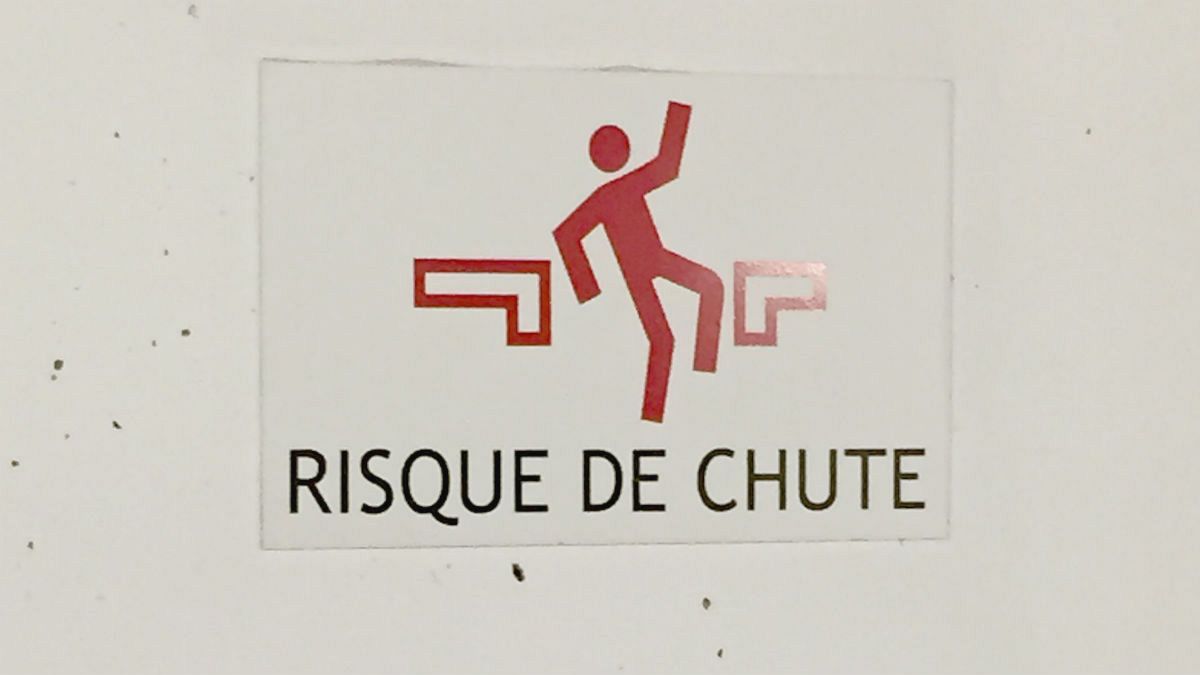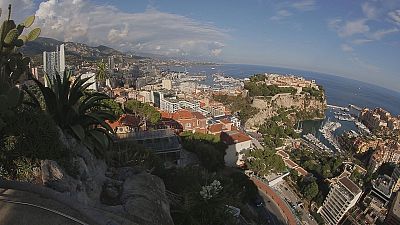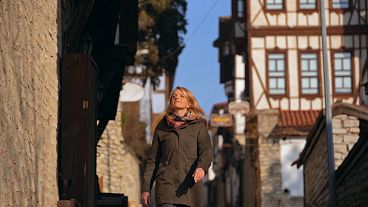Time travel is something I’ve always fantasized about. Book bulimia is partly responsible for it. Blame it on Barjavel, George Orwell, Margaret Atwood (may She get a Nobel Prize) and many talented history writers. And there I was, asked to investigate the future of Monaco! Little did I expect that this report would take me back to the third century BC.
Let me explain: everyone has heard of offshore land extensions. But have you ever wondered where the displaced water goes? Quite honestly I hadn’t, until I visited the Grimaldi Forum’s belly. The congress and exhibition center was built 15 years ago on reclaimed land, mostly underground. Or, to be accurate, it has seven floors below sea level. And there we were, 20 metres under sea level when the building’s manager, Alain Melkonian, offered to go four extra meters down to the drainage gallery.

Slippery grounds
Right, I have to admit I had a slight hesitation when faced with a ladder and scary security signs warning you of slippery ground and fall hazards. Oh well, a journalist has to do what she has to do! So, down we went, ending up in a long corridor, filled with the deafening noise of waterfalls. Actually, water was coming out of pipes and was being channeled on each side towards an invisible exit.

Our host explained: “In these swales, we collect the seepage water. Behind the wall on our right there’s the land, through which mountain water is on its way to the sea. Behind the wall on our left, there’s the sea, pushing to get its space back.” Just what I needed to feel comfortable… Anyway, Alain Melkonian explained that each hour, this drainage gallery pumps 400 cubic meters of seepage water back to the sea. It’s equivalent to a standard 25 metre-long public swimming pool!

3rd century BC
Rivers run towards the sea, fair enough, but to understand the sea forcing its way back, you had to go back to Antiquity and Archimedes’ Principle: the upward buoyant force that is exerted on a body immersed in a fluid, whether fully or partially submerged, is equal to the weight of the fluid that the body displaces. EUREKA!
Well, that very principle was already cleverly used in Monaco for another offshore land extension: the Port Hercule dyke, which is like a concrete boat attached to the land by a rotula (an articulated iron arm, if that makes it any clearer… Or just watch my Metropolitans report on the subject on this website.) The structure goes 12 meters under sea level, where the sea is between 40 and 50 meters-deep. Water currents and Archimedes’ upward buoyant force maintain this wonder of engineering staight and stable.

A magnet for excellence
Covering life in Monaco from different angles for three years in a row, I’ve come to think of the Principality as a magnet for audacity and excellence. That is especially true when it comes to infrastructure. Think about it: tunnels, offshore land extensions, skyscrapers – all built on a seismic zone exposed to violent winds… Monaco cannot take any chances, it has to hire the best.
And the best I met, every single year. This time, the best happened to be a celebrity in his field as well. I’m referring to Renzo Piano of course. Yes, Mr Beaubourg, Mr Shard, Mr so many other buildings… But to me, he was, above all, Mr Cité Internationale. As you know – or if you didn’t, you know now – Euronews is based in Lyon, South-Eastern France. Everyday, when in the writing and editing phase, I cycle past the Cité Internationale – quite a beautiful ensemble – to go to work.

Mister Cité Internationale
And there he was, the Cité Internationale maker, talking about his love for the sea, the Mediterranean and sailing, and how his building was about respecting people who, like him, were sea lovers and did not want to lose it from sight! It was not just PR, it was genuine concern for residents of Monaco whose horizon is about to change. His solution? Lay his new building on 5 metre-high stilts, so that you don’t break the seaview. A challenge for engineers, but a Must for Renzo Piano.
The man is particularly charismatic and one tends to drink in his words, but he is a no-nonsense person. As he puts it himself, he is no romantic and believes strongly that architecture should belong to its time and not try to copy the past, while maintaining respect for the locals and their environment.
Speaking of which: protecting marine life is at the heart of the land offshore extension project. The work should start in the last quarter of 2016 with moving all the endangered species to safety – namely the surrounding natural marine reserves. There will be casualties, of course. But the maximum is being done to limit the impact of the project on nature.
About showing what doesn’t exist
Of course, as some down-to-earth colleagues of mine pointed out, how was I going to show on TV an offshore land extension that didn’t yet exist. In our digital era, Monaco’s press centre had mocked up Monaco’s future in a very realistic film we were allowed to use. Great. But to connect it to the present time, we needed to film the coast from the very same angle.
Now, let me tell you about the person who made it possible. He’s not famous yet, but his reputation is growing by the day. Look at the aerial pictures from my report, while I’m interviewing State Minister Michel Roger. Aren’t they strikingly amazing? Looks easy to you? Well, to achieve such quality, you need a good camera, for sure, but above all, you need a stable drone and a skilled pilot.

Drone man
His name is Erwan Grimaud. I would describe him as a young geek from Monaco. A clever one, who started his company from scratch while studying biology. Now he has contracts with quite a few TV stations, but also with mountain rescue teams and the military, among others. He designs his drones according to his clients’ needs. And he shot the real pictures for the project’s digital video!
True enough, “geek” is more foreign to me than any foreign language. But still, as Erwan was having a fluent conversation about the future of drone technology with my cameraman, Bruno Lapierre, I could tell I was, again, in presence of excellence.
On our last day in Monaco – a Friday night – the music was banging out loud on Port Hercule. Fun it seemed indeed, and maybe a few celebrities were having a good time too, I’m honestly unable to say. But if you’re more interested in ideas than in celebrities, I can assure you Monaco won’t disappoint.



